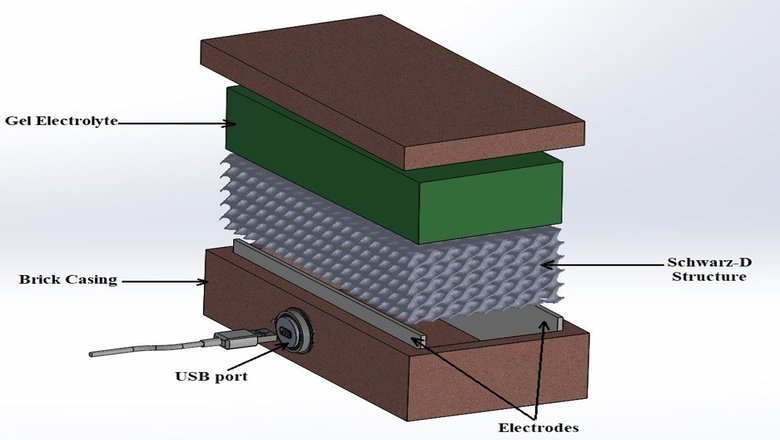A team of scientists from King’s College London carried out an intriguing research using 3D printing. They developed a thermogalvanic brick that is capable to produce electricity. The only condition for electricity to be generated is that the two faces of the brick should be at different temperatures.

How is it possible ?
After 3D printing interior based upon a Schwarz D minimum surface structure, the researchers used gelled water inside the brick, to obtain a thermogalvanic brick stronger than normal household bricks.
At the same time inside the two faces of the brick, “electrochemical” reduction and oxidation processes started. Electrodes at these faces should therefore remain at different temperatures so electricity can be produced.
In addition to generate electricity, such type of brick can also be used to improve insulation.
Addressing electricity issues in building
This innovation might be a solution in construction dedicated to refugee camps or environments where electricity is not available.
Dr Leigh Aldous, Senior Lecturer from the Department of Chemistry at King’s said: “The idea is that these bricks could be 3D printed from recycled plastic, and be used to quickly and easily make something like a refugee shelter. By the simple act of keeping the occupants warmer or cooler than their surroundings, electricity will be produced, enough to provide some night time lighting, and recharge a mobile phone.”
“Crucially, they do not require maintenance, recharging or refilling. Unlike batteries, they store no energy themselves, which also removes risk of fire and transport restrictions.”
For further information about 3D Printing, follow us on our social networks and subscribe to our newsletter!
Would you like to be featured in the next issue of our digital magazine? Send us an email at contact@3dadept.com
//pagead2.googlesyndication.com/pagead/js/adsbygoogle.js
(adsbygoogle = window.adsbygoogle || []).push({});





